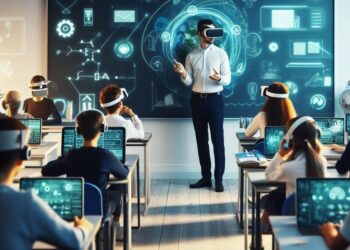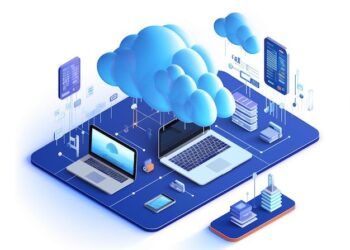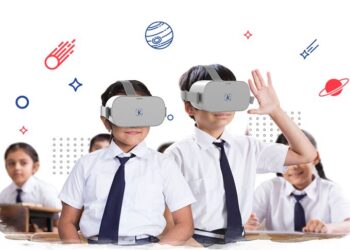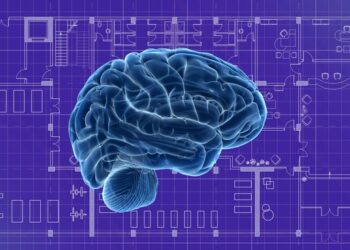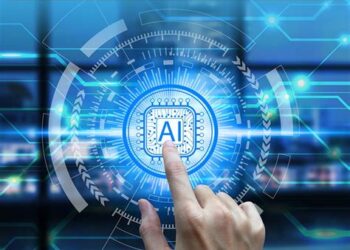The concept of learning is undergoing its most profound transformation in centuries. The traditional model—a one-size-fits-all lecture delivered within the physical confines of a classroom—is rapidly becoming a relic of a bygone era. We are standing at the dawn of a new age, an era where education is not a finite period in our youth but a continuous, integrated part of our lives. The future of learning is here, and it is personal, immersive, and perpetually evolving.
This revolution is not driven by a single innovation but by a powerful convergence of technology, neuroscience, and a fundamental shift in the skills required for the modern workforce. The rigid, passive consumption of information is being replaced by active, adaptive, and engaging experiences tailored to the individual. For students, professionals, and lifelong learners, this means unprecedented access to knowledge and skill development that is more effective, efficient, and aligned with their unique goals and learning styles.
This in-depth article explores the dynamic and multifaceted future of learning. We will delve into the core technological and pedagogical shifts that are dismantling old paradigms and constructing the educational frameworks of tomorrow. From the hyper-personalization powered by Artificial Intelligence (AI) to the immersive worlds of Virtual Reality (VR) and the bite-sized efficiency of microlearning, we will uncover how these trends are creating a more intelligent, accessible, and impactful learning ecosystem for everyone, everywhere.
A. Artificial Intelligence: The Personal Tutor for All
Perhaps the single most significant driver of change is Artificial Intelligence. AI is moving beyond a futuristic buzzword to become the central nervous system of the new learning ecosystem. Its ability to process vast amounts of data and recognize patterns allows for the creation of educational experiences that are deeply personalized and incredibly efficient.
- Adaptive Learning Paths: AI-powered platforms are demolishing the one-pace-fits-all lecture. These systems analyze a learner’s performance in real-time, identifying their strengths and, more importantly, their specific areas of weakness. If a student is struggling with a particular mathematical concept, the AI can instantly provide supplementary materials, alternative explanations, or foundational exercises to bridge the gap. Conversely, if a learner demonstrates mastery, the system can accelerate them to more advanced topics, eliminating boredom and maximizing engagement. This creates a unique, dynamic learning path for every individual.
- Intelligent Content and Curation: The sheer volume of information available today is overwhelming. AI is becoming an essential tool for curating this content. Sophisticated algorithms can sift through millions of articles, videos, and research papers to recommend the most relevant and high-quality resources for a learner’s specific needs and goals. AI can even generate customized learning materials, such as practice quizzes and summaries, tailored to a user’s progress.
- AI-Powered Mentorship and Feedback: While human mentors remain invaluable, AI can augment their capabilities significantly. AI-driven tools can provide instant feedback on assignments, from correcting code to analyzing the structure of an essay. Chatbots and virtual tutors can offer 24/7 support, answering common questions and guiding learners through challenging modules. This frees up human educators to focus on higher-level tasks like mentorship, critical thinking development, and fostering creativity.
B. Immersive Technologies: Learning by Living It
For decades, learning has been largely confined to the abstract—reading about historical events, looking at diagrams of human anatomy, or studying blueprints of complex machinery. Immersive technologies like Virtual Reality (VR) and Augmented Reality (AR) are shattering this limitation, transforming abstract concepts into tangible, lived experiences.
- Virtual Reality (VR) for Experiential Learning: VR headsets can transport learners to places and situations that would be impossible, dangerous, or prohibitively expensive to access in real life. Medical students can perform complex surgeries in a risk-free virtual operating room. History students can walk the streets of ancient Rome. Engineers can assemble and troubleshoot a jet engine without ever touching a physical component. This “learning by doing” in a simulated environment dramatically increases retention and deepens understanding.
- Augmented Reality (AR) for Contextual Knowledge: Unlike VR, which creates a new digital world, AR overlays digital information onto the real world. A mechanic wearing AR glasses could see a step-by-step repair guide projected directly onto the engine they are working on. An architecture student could point their tablet at an empty lot and see a fully rendered 3D model of their building design in situ. AR provides just-in-time, contextual information that makes learning more practical and immediately applicable.
C. Gamification: Unlocking Motivation Through Play
Gamification is the strategic integration of game mechanics and game design principles into non-game contexts, and it is a powerful tool for boosting engagement and motivation in learning. By tapping into our innate desires for achievement, competition, and reward, gamification can transform mundane tasks into compelling challenges.
- Points, Badges, and Leaderboards: These are the foundational elements of gamification. Awarding points for completing modules, badges for mastering a new skill, and displaying progress on a leaderboard fosters a sense of accomplishment and healthy competition. This encourages learners to stay committed and strive for mastery.
- Narrative and Storytelling: Effective gamified learning often weaves a narrative or story around the educational content. This could involve embarking on a “quest” to learn a new language or solving a “mystery” by applying critical thinking skills. A compelling story gives learners a reason to care about the content beyond its face value.
- Immediate Feedback and Progression: Games provide constant, instantaneous feedback. You either clear the level or you don’t. This principle is applied in gamified learning to help users understand immediately what they did right or wrong, allowing for rapid correction and improvement. The clear sense of progression, of leveling up, is a powerful motivator to continue the learning journey.
D. Microlearning and On-Demand Knowledge
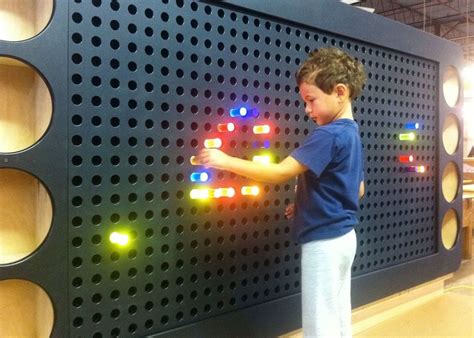
The modern learner is often a busy professional trying to upskill between meetings or a student juggling multiple commitments. The days of setting aside multi-hour blocks for learning are dwindling. Microlearning addresses this reality by delivering content in small, focused, and easily digestible bursts.
- Bite-Sized Modules: Microlearning breaks down complex topics into short modules, typically lasting between 3 to 10 minutes. These could be a short explainer video, a quick interactive quiz, or a single-concept infographic. This format is perfect for mobile consumption and fits easily into the natural lulls of a busy day.
- Just-in-Time Learning: The core advantage of microlearning is its accessibility. When an employee needs to learn how to perform a specific task in a new software suite, they don’t need a full-day training course. They need a two-minute video that shows them exactly which buttons to press. Microlearning provides this “just-in-time” knowledge, making it incredibly efficient for workplace training and performance support.
- Enhanced Retention: By focusing on one or two key learning objectives per module, microlearning reduces cognitive load. This makes it easier for the brain to process and retain the new information, a concept supported by the Ebbinghaus forgetting curve, which shows that we retain information better when it is presented in spaced, repeated intervals.
E. The Rise of Lifelong Learning and New Skill Paradigms

Perhaps the most significant philosophical shift in education is the universal acceptance of lifelong learning. The idea of “finishing” your education is obsolete. Technology and globalization are accelerating the pace of change so rapidly that the skills in demand today may not be the ones needed tomorrow.
- Upskilling and Reskilling: The future of work is not about a single career but a series of evolving roles. Continuous upskilling (deepening existing skills) and reskilling (learning entirely new skills) are becoming mandatory for career longevity. Online learning platforms and corporate training initiatives are being designed to facilitate this constant state of professional evolution.
- Focus on Power Skills: While technical skills (hard skills) remain crucial, employers are placing an ever-increasing premium on “power skills” (formerly soft skills). These are uniquely human capabilities that are difficult for AI to replicate, such as critical thinking, creativity, collaboration, emotional intelligence, and complex problem-solving. The learning systems of the future are increasingly focused on fostering these abilities through project-based learning, collaborative virtual environments, and real-world problem-solving scenarios.
The future of learning is a dynamic, interconnected ecosystem. It’s a world where an AI tutor guides you through a personalized curriculum, where you can practice a new skill in a VR simulation, earn a badge for your progress, and access a micro-lesson on your phone when you need a quick refresher. This is not science fiction; it is the reality being built today. By embracing these powerful new tools and methodologies, we can unlock human potential on an unprecedented scale, creating a more knowledgeable, skilled, and adaptable global society.


